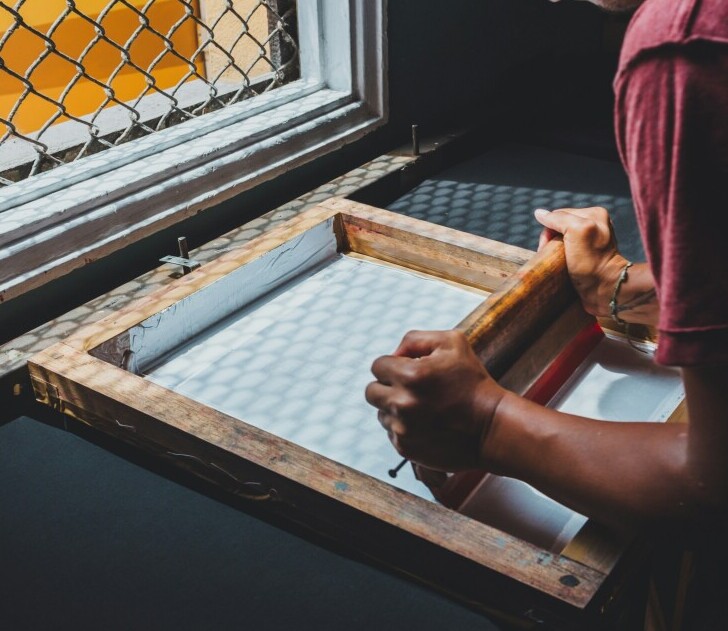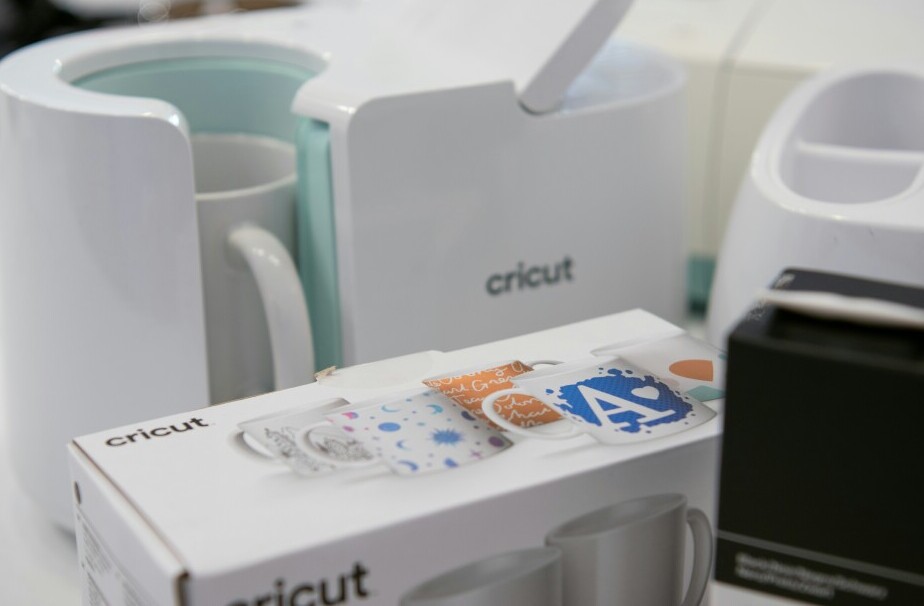Screen printing and sublimation are two popular techniques in the world of printing, each with its unique flair and applications. Understanding these methods is essential whether you’re a newbie or someone looking to refine their craft. Let’s break down what makes these techniques stand apart.
Screen printing, also known as silk screening, has been around for centuries, originating from ancient China. It’s a traditional method that has stood the test of time due to its versatility and robust outcomes. On the other hand, sublimation is a more recent innovation that has transformed how we think about digital printing, known for producing vibrant, photo-quality results.
Today’s world is all about customization, and both screen printing and sublimation offer answers to this demand in different ways. Screen printing is celebrated for its ability to lay down vivid inks on a variety of surfaces, while sublimation excels in producing detailed images, especially on polyester and coated materials.
The choice between these two often depends on what you’re aiming to achieve. Screen printing shines when you need bold, lasting prints on diverse materials. Think t-shirts or posters. Need something detailed or working with mixed media items like mugs or phone cases? That’s where sublimation could be your best bet.
Both methods have carved out significant niches in the market, serving from art studios to factories. Familiarizing yourself with these technologies not only helps in choosing the right tool for your needs but also in understanding how each can elevate your creative pursuits.
How Screen Printing Works: A Step-by-Step Guide
Screen printing might sound a bit mystifying if you’re just stepping into the printing realm, but it’s actually a pretty straightforward process once you get the hang of it. At its core, it’s about pushing ink through a stencil – known as a screen – onto your chosen material. But let’s flesh that out a bit.
The materials needed start with a screen, which is a fine mesh stretched over a frame. Then, there’s the stencil, ink, a squeegee, and your material of choice, often fabric or paper. You’ll also need a dark room for making screens and drying racks for that crisp end result.
First up is the design phase, where your artwork should be vector-based to ensure those clean, sharp details. Once your design is ready, you’re creating what’s called a stencil by coating the mesh with a photosensitive emulsion. Light exposure hardens the emulsion around your design, leaving behind areas ink can pass through.
The printing itself involves placing your prepared screen over the material, adding ink along the edge, and using a squeegee to press the ink through the screen. The goal is to keep a constant pressure as you sweep to ensure even distribution. The next step involves curing the ink – typically with heat – so it bonds perfectly and stands the test of time.
Screen printing has that analog feel, making it ideal when you need to bust out large quantities. It’s bold, it lasts, and it’s fun to watch the layers build up. However, it’s not all sunshine, since complex designs with tons of colors can get tricky and costly. But, when you’re in the groove, screen printing will take your projects to the next level.
Unveiling Sublimation Printing
Sublimation printing is like the future arriving early, with its roots in digital art and technologically advanced processes. It’s all about turning solid into gas without hitting the liquid phase – kind of like disappearing ink, but in reverse genius.
To make sublimation work its charm, you need a couple of key tools: a printer that’s sublimation-ready, special dye sublimation inks, transfer paper, and a compatible heat press. Polyester or polymer-coated surfaces are a must, as they allow the dye to latch on properly.
The magic starts with designing your image digitally, then printing it onto specialized transfer paper using sublimation inks. These inks are heat-activated, ready to transform once you bring in your trusty heat press.
Time for the big reveal: Place your transfer paper design down on your item – say, a polyester t-shirt or a ceramic mug – and hit it with the heat press. At high temperatures, the dye morphs into gas, seeping into the material’s surface, which then solidifies back as a permanent, vibrant design.
One of the standout perks of sublimation is that it doesn’t fade, crack, or peel because it’s embedded under the surface – perfect for photo-realistic designs and detailed artwork. However, you’re mostly limited to white or light-colored and polyester or polymer materials.
In short, if you’re eyeing those dazzling, long-lasting prints for your projects, sublimation printing has got your back, provided you stick with the right materials and colors.
The Artistic and Versatile Nature of Screen Printing
Screen printing isn’t just a method; it’s an art form with almost limitless creative possibilities. It’s so flexible when it comes to design and materials, making it a favorite for artists and entrepreneurs alike.
What’s truly artistic about screen printing is how you can customize the thickness of ink, giving your projects a texture and vibrancy that’s hard to match. You can craft unique custom designs that pop on t-shirts or fine art prints. Mixing colors directly on the screen allows for unique color blending that’s both dynamic and eye-catching.
This technique thrives on variety. You can print on fabric, paper, plastic, or even wood and glass. Such adaptability means fewer limits on your creativity, so your ideas aren’t tied down to just one surface. This makes it especially clutch for producing custom apparel, posters, tote bags, and more.
Aside from adaptability, screen printing offers bold, vivid results. The inks used are durable and rich in color, allowing for designs that stand the test of time without losing their luster, which makes them great for bulk production on items like sports jerseys or custom merchandise.
It’s important to remember, though, that achieving intricate designs with multiple colors can get a bit complex, as each color needs a separate screen. But on the plus side, mastering this craft gives you the freedom and skill to create detailed, bespoke designs, offering something truly special compared to other printing methods.
The Precision and Efficiency of Sublimation
Sublimation printing is the go-to when you need precision and speed wrapped in one neat package. This technique ensures your designs are sharp with colors that stay bright wash after wash, perfect for businesses needing consistent quality.
The true advantage here lies in how sublimation inks turn into gas and bond with the polyester fibers. This means images are part of the material itself, resulting in prints that feel soft and aren’t susceptible to fading, cracking, or peeling. Ideal for making products like uniforms or custom sports gear where durability is king.
Where sublimation really shines is in producing high-quality, photo-like images. The colors are vibrant and detailed, with the nuance needed for crisp images, making it suitable for detailed logos and photo gifts.
And let’s talk about efficiency. For print-on-demand businesses, it’s a dream come true. Quick to set up and even quicker to produce once your design’s done and ready, since you merely swap out the transfer paper to switch up designs – no reconfiguring machinery.
That said, sublimation does need special materials that are lighter and contain polyester, which can restrict your palette somewhat. But for a sleek, pro-like finish, few methods can compete. It’s a perfect fit if you’re after precision in vivid, fade-resistant prints on a range of specially coated items or fabrics.
Cost Comparison: Screen Printing vs Sublimation
When it comes to balancing budget and quality, both screen printing and sublimation have their own set of financial implications. Understanding the costs involved is crucial, especially when planning larger projects.
Screen printing tends to have a higher initial setup cost due to the need for creating individual screens for each color in your design. This can add up quickly if you’re working with complex, multi-colored graphics. However, once the setup is complete, the cost per print decreases significantly, making it economical for large batch production. It’s a solid choice when you’re looking to produce items in bulk.
Sublimation, on the other hand, doesn’t require screens, and thus the startup costs are generally lower. You do need a compatible printer, sublimation inks, and heat presses, which can mean a higher initial equipment cost. But with no need for new screens with each new design, it’s ideal for short runs or one-off designs, keeping the per-unit cost steady.
In terms of material costs, sublimation requires special polyester-based or coated items, which might be pricier than uncoated materials. Screen printing usually works with more affordable fabrics and surfaces.
Economically speaking, choosing between screen printing and sublimation often boils down to your project’s scale and the item’s material. While sublimation trumps for short runs with high-quality results, screen printing takes the lead with larger orders where vibrant simplicity is key.
Environmental Impact: Sustainability Matters
The environmental footprint of printing methods is becoming a growing concern as we all strive for greener practices. Screen printing and sublimation both have their own sets of eco-friendly elements and areas that could see improvement.
Screen printing hasn’t always had the greenest reputation. Traditional inks, like plastisol, can be quite harmful to the environment if not disposed of properly due to the chemicals involved. However, the industry is making strides with water-based and eco-friendly inks that are less toxic and better for our planet.
Sublimation printing generally fares better due to the lack of liquid waste and the relatively eco-friendly nature of sublimation dyes. The dyes become part of the fabric without excess chemical disposal. But, keep an eye on the sustainability of the substrates you’re using – polyesters aren’t always the most eco-friendly.
Both processes offer opportunities for minimizing impact by choosing sustainable materials and recycling whenever possible. Some companies are developing recycling programs for used sublimation cartridges and promoting the use of reusable frames in screen printing.
Another factor is energy usage. Screen printing, particularly with DIY setups, can be less energy-intensive than the heat press required for sublimation. Balancing the energy use with the Green Energy options can help lessen the overall impact.
No method is perfect, but by picking your products wisely and being conscious of the materials and disposal methods, you can lessen your footprint. Both techniques are gradually adopting greener technologies, pushing toward more sustainable future options.
Choosing the Right Technique for Your Needs
Figuring out whether screen printing or sublimation is right for you boils down to your specific needs, goals, and the nature of your projects. It’s about scrutinizing the details – from the materials and design complexity to the quantity of products you aim to produce.
For starters, if your project involves bulk orders with simple, bold graphics on dark fabrics, screen printing might be your go-to. It’s cost-effective for large runs and offers that classic look and feel ideal for merchandise like band tees or bulk event apparel.
When you’re dealing with intricate designs or require photo-quality prints, sublimation stands out. This technique shines with smaller batches requiring high precision and is perfect for promotional products, personalized items, or anything with complex imagery. Plus, it’s great for sportswear due to its durability and vibrant finish.
Consider the materials too. Screen printing can handle an array of substrates, while sublimation needs poly-coated surfaces or polyester fabrics. Evaluating what materials you frequently work with will guide your choice.
Your business goals also play a significant role. If you’re focusing on unique, one-off designs, the faster setup for each sublimation print could be a major benefit. For bulk items, the lower per-item cost after screen setup might align better with your budget.
Avoid common pitfalls by thoroughly understanding each method’s limitations and strengths. Watching tutorial videos or attending workshops can empower you with the right knowledge to execute your projects efficiently.
Real-world stories can be a goldmine of insight too. Take a cue from those who’ve walked the path, learning from their successes and stumbles to help make the best decision tailored to your creative ambitions.
Conclusion: Making an Informed Decision
With both screen printing and sublimation having their unique advantages, making a decision relies heavily on understanding your own objectives and constraints. Each method brings something different to the table, and knowing what you need will guide you to the right choice.
If longevity and sturdiness are priorities for large runs, screen printing is a robust and reliable choice. Its affordability in bulk and ability to leave a lasting impression make it great for commercial purposes.
On the flip side, sublimation’s ability to capture detailed designs with vibrant colors makes it the star when finesse is key. This is particularly relevant for niche markets that demand precision and personalization, like custom gifts and specialty marketing items.
Exploring tutorials or even taking up a short class can deepen your understanding, making the decision process easier. Building a small test routine – experimenting with each technique on different materials – could provide a practical glimpse into what works best for your needs.
Future trends in printing suggest each method will continue evolving, with more eco-friendly options and advanced technologies enhancing accessibility and quality.
Ultimately, whether you’re a hobbyist or an entrepreneur, choosing the right printing method opens up a world of possibilities for bold creative expressions. Understanding these processes ensures your ideas transform into reality with the right touch.
